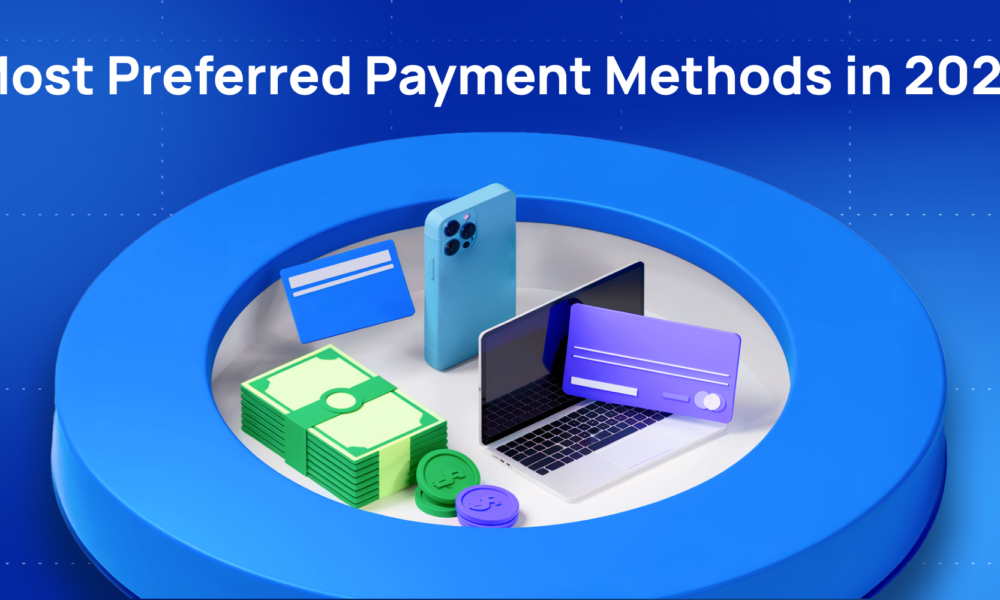The Most Preferred Payment Methods in 2024: Global Trends and Regional Insights

The global payments industry is undergoing rapid transformation, driven by technological advancements and shifting consumer behaviours. Despite global economic uncertainties, the payments sector has shown remarkable resilience. In 2023 alone, the sector attracted over $33.4 billion in funding, underscoring its critical role in the fintech landscape. Projections for the future are even more promising, with the industry expected to exceed $3 trillion by 2027. The total transaction value in the digital payments sector is anticipated to reach over $16.59 trillion by 2028.
As businesses adapt to the growing industry, understanding the most preferred payment methods across regions is essential for maintaining competitiveness. This article, based on the insights from the Transferty Analytical Report, explores the global payment trends and offers a closer look at regional variations, providing businesses with the knowledge required to effectively tailor their growth strategies.

Global Payment Preferences
In 2024, digital wallets continue to dominate the global payment landscape, as the most preferred method for both online and in-person transactions. Digital wallets such as Apple Pay, Google Pay, and PayPal have gained widespread popularity due to their ease of use, security features, and integration with other services. In 2023, digital wallets accounted for 50% of global digital transactions, and this share is projected to rise to 61% by 2027. The ability to store multiple payment options and make seamless transactions makes digital wallets a favourite among consumers worldwide.

Despite the rise of digital wallets, credit cards remain a significant payment method, particularly for recurring payments, subscriptions, and large purchases. Credit cards still account for 22% of global transactions, and their integration into digital wallets helps maintain their relevance in digital. While credit cards have seen a slight decline in market share in some regions, their volume of transactions is expected to grow due to their continued role in consumer credit markets.
Debit cards, used for 12% of global online purchases, remain essential in regions where consumers prefer direct access to their funds without credit. However, their share of transactions is expected to decline slightly as digital wallets become more ubiquitous.
The rise of Buy Now, Pay Later services is reshaping payment behaviours, especially among younger consumers. BNPL currently accounts for 5% of global digital transactions and is expected to see significant growth in the coming years. This flexible payment option is gaining traction in retail, online shopping, and even some service sectors, as it allows consumers to spread payments over time without incurring interest, making it an attractive alternative to traditional credit.
Payment Preferences in Regions

Asia-Pacific
The Asia-Pacific region leads the world in digital wallet adoption, driven by high mobile penetration and the rapid growth of e-commerce. In countries like China, digital wallets are used for an overwhelming 82% of online transactions, powered by platforms like Alipay and WeChat Pay. Across the region, digital wallets account for 70% of all online transactions, making them the preferred choice for consumers.
In addition to digital wallets, real-time payment systems are gaining significant traction. India’s Unified Payments Interface is an example of how real-time payments are becoming a staple in transactions. These systems enable instant transfers between bank accounts, offering consumers an efficient and cost-effective alternative to traditional methods.
While credit cards remain important in APAC, especially in Japan and South Korea where they account for 23% of online transactions, their usage is more limited in comparison to digital wallets. Debit cards are still widely used in markets like India and Indonesia, where they make up 17% of payment methods used for online purchases. These cards remain essential for consumers who prefer direct access to their bank accounts without relying on credit.
North America
In North America, digital wallets surpassed credit cards as the most preferred online payment method in 2023. Digital wallets accounted for 37% of online transactions, driven by their integration with mobile devices and apps, which offer enhanced security features like biometric authentication. Meanwhile, credit cards closely follow with 33% of transactions, maintaining their appeal for larger purchases and recurring payments such as subscriptions.
Debit cards continue to play a role in the region, accounting for 18% of transactions, particularly for everyday purchases. BNPL services are also on the rise, making up 5% of digital payments in North America. Younger consumers are increasingly drawn to BNPL due to its flexibility, and businesses across various sectors are incorporating BNPL options into their checkout processes to capture this growing segment.
Europe
Europe’s payment ecosystem is diverse, with digital wallets leading the charge in e-commerce. Digital wallets are used for 30% of online transactions across the continent, with adoption being especially high in countries like the UK and France. In addition to digital wallets, account-to-account transfers are popular in markets such as Germany and the Netherlands, where consumers prioritise direct bank transfers for their speed and low cost.
Credit cards maintain a strong presence in parts of Europe, particularly in the UK and France, where they account for around 25% of online transactions. In contrast, debit cards are the preferred payment method in Northern European countries like Sweden and the Netherlands, representing approximately 20% of online purchases.
Despite the decline of cash in Europe, it remains relevant in certain point-of-sale environments, though its use is steadily decreasing as more consumers transition to digital methods.
Latin America
Latin America’s payment landscape is marked by a combination of credit cards and emerging digital solutions. Credit cards are the dominant payment method for online transactions, accounting for 35% of payments in the region. However, the adoption of account-to-account payments is on the rise, spurred by Brazil’s successful Pix system, which allows consumers to make real-time transfers directly between bank accounts.
Debit cards also play an important role in Latin America, particularly in countries like Argentina and Colombia, where they account for about 15% of online transactions. Cash, while still used for many POS transactions, is gradually being replaced by digital wallets and A2A payments as more consumers turn to these methods for their convenience and security.
Middle East & Africa
The MEA region is witnessing growing adoption of digital wallets and debit cards, with both methods playing a significant role in online transactions. In Saudi Arabia, for instance, debit cards account for 33% of online payments. BNPL services and digital wallets are also seeing increased usage across the region, particularly in countries like the UAE and South Africa.
Credit card usage is rising, especially in the UAE and South Africa, where they account for approximately 20% of online transactions. As consumers in the MEA region gain greater access to financial services and mobile technologies, the shift towards digital payment methods is expected to continue accelerating.
Conclusion
As the global payment landscape continues to grow, businesses must keep track of the new coming trends to meet the shifting demands of consumers. By aligning with local consumer preferences and leveraging emerging payment technologies, businesses can stay competitive and gain more customers. New Analytical Report made by Transferty experts provides valuable data and forecasts that can help guide your strategy in the coming years. Get deeper insights into these trends and explore a comprehensive analysis of the fintech industry’s future.





